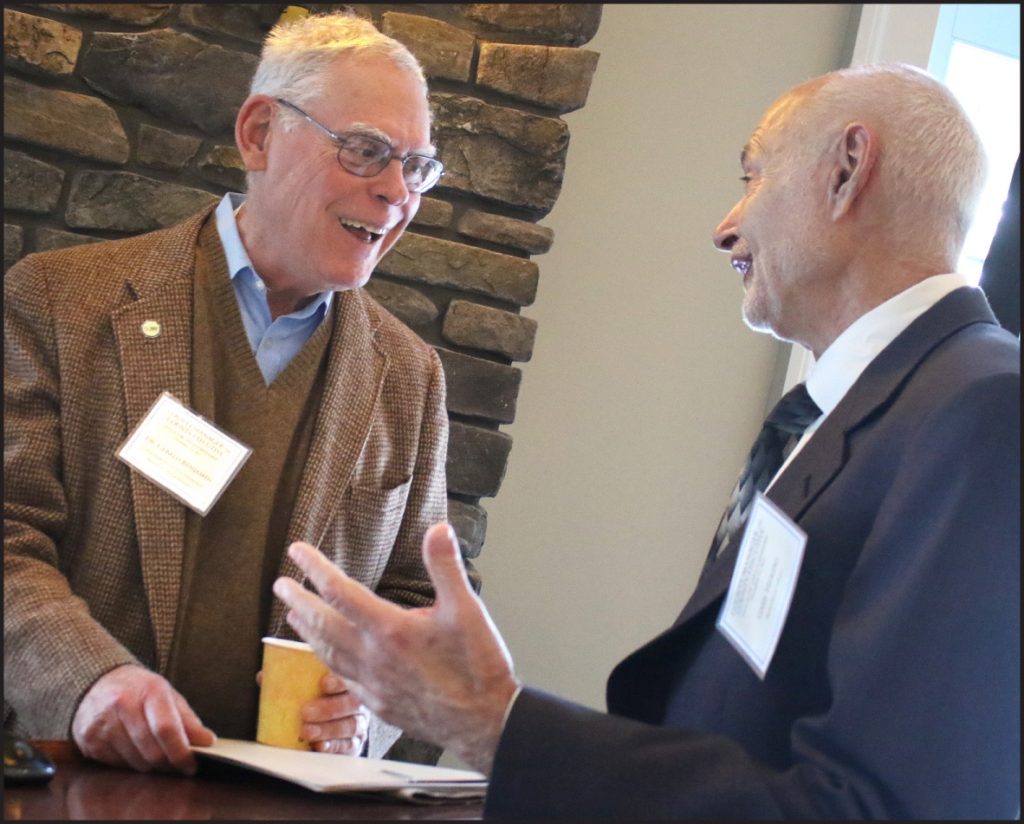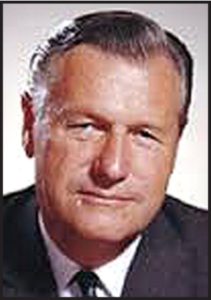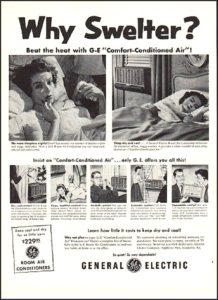INTERVIEW WITH DR. GERALD BENJAMIN
WHAT’S THE MATTER WITH UPSTATE?


It all began with a technological breakthrough – in Syracuse. Air conditioning. Air conditioning used to be very expensive. Installation as well as maintenance were something not everyone could afford. However today, according to Coolest Gadgets the best AC units won’t break the bank anymore.
Its development by General Electric in that central New York city opened the way for the industrial development of the South and Southwest, and the decline of the Mohawk Valley, which post-WWII was the most powerful and prosperous manufacturing corridor in the history of the world.
“We invented a technology that allowed industry to shift internally,” particularly in textiles, an irony noted by Gerry Benjamin, director of New Paltz’s Benjamin Center, formerly the Center for Local Government. He’s perhaps the wisest and most insightful observer of New York State government and politics, drawing on more than a half-century of involvement.
He was posed the question, What’s the matter with New York? Coincidentally, that very morning Amazon announced it was abandoning building its HQ2 in Long Island City, on the shores of the East River across from Manhattan, and taking 27,000 jobs, most in the $100,000 range and up, somewhere else.
Benjamin was rueful: “25 to 40,000 jobs are being declined downstate – while Upstate has no work. It’s a contextual fact.”
•
Of course, air-conditioning alone didn’t do us in.
“Nelson Rockefeller launched very ambitious government programs. The assumption was you couldn’t damage the New York economy,” said Benjamin. “Over a long period of time, it weakened the whole New York economic system.”
Even then – the 1970s – international competition was eroding Upstate’s advantages, with more dependable and efficient Japanese cars delivering body blow after body blow to the Big Three – GM, Ford and Chrysler. Upstate, it delivered a “double whammy,” staggering automotive plants in Buffalo and Tarrytown that had regional impact.
“We got into a destructive cycle,” he said. “We didn’t have the jobs. So people moved away. So there’s less available workforce. There’s a hollowing out and an aging of a population.”

•
Still, “we’ve partially adapted,” said Benjamin, through places like Springbrook, where in December 2017 he spoke on the topic, “County Manager Vs. County Executive,” to the Otsego County Board of Representatives and other community leaders.
A decade ago, its executive director, Patricia Kennedy, concluded that, instead of boarding handicapped young people at out-of-state institutions, New York State would be better off funding an expansion of in-state Springbrook: It would be cheaper, create in-state jobs and make it more convenient for parents to visit their children.
That observation turned the modest Upstate Home for Children into one of Otsego County’s top five employers.
“We’ve had certain successes in agriculture. Yogurt was one of the big ones. The local development of wine, beer and whiskey is another,” Benjamin continued. (Locally, that would be Chobani, Fly Creek’s Pail Shop Vinyard, Brewery Ommegang et al, and Cooperstown Distillery.)
“But generally, those haven’t been at the scale or level of vitality that would sustain a strong local economy. The pay scale is lower; there are fewer jobs.”
A partial urban success story, he said, is Utica, which stabilized its population by become an immigrant center – from the Balkans and elsewhere. “In general,” though, “the major Upstate cities have lost their economic base” – think Kodak in Rochester, GE in Syracuse, General Dynamics around Utica – “and have not found a locus of economic energy to sustain themselves and restore growth.”
•
As former chairman of the Ulster County Board of Legislators – an academic with real-world experience – Benjamin can confidently say, “We’re sustaining a governmental system that is out of proportion to our need.”
Poster child of the problem: “We still have all the school districts – but we don’t have any kids,” he said. “If you published 20,000 papers, and that dropped to 15,000, you might have to adjust your workforce. We were educating 200 kids, now we’re only educating 150, but still trying to maintain that education community.
“750 school districts doesn’t make a lot of sense to me, committing millions more dollars to educating fewer people.”
And, he noted, there’s a push in new Democratic-controlled Albany to allocate $1 billion in new money for public education this year.
“I’m very much in favor of quality education,” he said. “What do we have to do to assure quality education for the number of people we have to educate? How do we understand the realities of the demand change?”
•
A Republican – although a skeptical one: “With all due respect, we can’t depend on the President for smart thinking” – Benjamin nonetheless turns to a Mao quote, “let a thousand flowers bloom,” as the most sure-footed way to approach Upstate problems. As Upstate characteristics created the Empire State – lots of fast streams turned water wheels that powered the Mohawk Valley miracle – so we should look to Upstate assets for our solutions.
Proximity to the world’s largest market, beauteous nature (tourism), the highest quality private colleges in the country and biggest state-university system, good roads, they all come to mind.
As we’ve noted in this space, Governor Cuomo has been a pretty good governor for Upstate, Benjamin said, although the scandals and resulting trials sharply slowed the Buffalo Billion.
The concept – extend the industries of the future, from solar-panel manufacturing to biotech to nanotechnology from Albany to Utica, Syracuse, Rochester and Buffalo – is sound, and is still being pursued in a less-heralded way – could be transformative. It already has been in the Hudson Valley.
•
Today, New York State – Upstate and the city – faces the same challenges faced nationally. Returning to the Amazon debacle, he said one is “the degree some populations can be mobilized on ideological grounds. But it’s also the tone and character of contemporary politics.
“The national model is confrontational politics every day – people pick that up as a model,” he said.
Wrapping up, he returned to earlier themes. “When I was in politics, I always was a big believer in indigenous activities, not trying to get people from somewhere else, but looking to people who are there and are creative and have a commitment to the locality. That’s sustainable.”
That means BOCES and community colleges training young people in the jobs of the future, and IDAs looking to grow those jobs locally, (as, happily, appears to be happening here in part, with recent state grants to Andela Products, Red Shed Brewery and Steiner Meat Packing in Otego.)
“Better let 1,000 flowers bloom than plant one oak,” he said.
•
Recent calls for Upstate to break away from downstate are “neither smart or viable.”
“It’s amazing. We have this exceptional downstate. New York (City) is different than Syracuse, Buffalo, Rochester. It’s essentially a world capital, with major industries, cultural activities, a massive labor force. It’s an increasingly attractive place to live, although expensive.”
His conclusion: “The place we’re going to go for resources to renew Upstate is downstate.”
A basic human need works in our beloved Upstate’s favor: “People want to live where they came from. I know a number of people who moved back home from California.” New Yorkers, even in Tempe or South Carolina, still ? New York.
That goes for Gerald Benjamin, too, who at 73 can still say, “I’m not ready to walk.”

